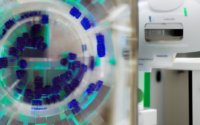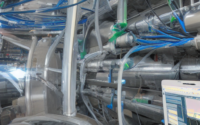Sustainable Energy Solutions in Data Centers
Sustainable Energy Solutions in Data Centers
Introduction
In recent years, the demand for data centers has significantly increased due to the exponential growth of data-driven technologies. However, the energy consumption of these data centers has become a serious concern, leading to an urgent need for sustainable energy solutions. This article explores various strategies and technologies that can be implemented in data centers to reduce their carbon footprint and promote energy efficiency.
1. Renewable Energy Sources
One of the key ways to make data centers more sustainable is by integrating renewable energy sources. Solar power, wind energy, and hydropower are some of the most common renewable energy options that can be harnessed. By installing solar panels on the rooftops of data centers or utilizing wind turbines nearby, it is possible to generate clean electricity to power the center. Additionally, utilizing hydropower can help offset energy consumption during peak hours.
2. Energy-Efficient Cooling Systems
Data centers require efficient cooling systems to maintain optimal operating temperatures for servers and equipment. Traditional cooling methods, such as air conditioning, can be extremely energy-intensive. However, switching to more energy-efficient cooling systems can significantly reduce energy consumption. One example is the use of liquid cooling, where a specialized coolant is used to cool the servers directly. Another option is the implementation of hot/cold aisle containment systems to improve airflow and minimize waste heat.
3. Virtualization and Consolidation
Virtualization and consolidation are effective strategies to optimize resource utilization in data centers. By virtualizing servers and consolidating workloads, it is possible to reduce the number of physical servers required, which leads to lower energy consumption. Virtual machines can be created to run multiple applications, increasing efficiency and reducing overall power demands. Additionally, implementing server load balancing algorithms ensures that resources are allocated optimally, further enhancing energy efficiency.
4. Efficient Power Distribution
Efficient power distribution plays a crucial role in minimizing energy waste in data centers. Implementing an efficient power distribution design, such as a well-designed Uninterruptible Power Supply (UPS) system, helps reduce power loss and ensures that electricity is distributed effectively to critical equipment. Moreover, employing advanced power management systems allows for better monitoring and control of power consumption, optimizing efficiency.
5. Waste Heat Recovery
Data centers produce a significant amount of waste heat that can be repurposed to provide heating to surrounding buildings or for other industrial processes. Waste heat recovery systems can capture this excess heat and redirect it to useful applications, reducing the overall energy demand. By implementing cogeneration systems, data centers can simultaneously produce electricity and heat, making them more energy-efficient and environmentally friendly.
6. Energy Monitoring and Analytics
Implementing real-time energy monitoring and analytics systems allows data centers to track and analyze energy consumption patterns accurately. This data enables identification of energy-intensive areas and facilitates the implementation of energy-saving measures. By using machine learning algorithms and predictive analytics, data centers can optimize their energy usage and identify potential areas for further improvement.
Conclusion
Data centers are vital for modern technological advancements, but their high energy consumption contributes to environmental challenges. To address this issue, implementing sustainable energy solutions is imperative. Integrating renewable energy sources, utilizing energy-efficient cooling systems, virtualizing and consolidating servers, optimizing power distribution, recovering waste heat, and implementing energy monitoring systems are key steps toward achieving sustainability in data centers. By adopting these strategies, data centers can significantly reduce their carbon footprint and contribute to a greener future.



